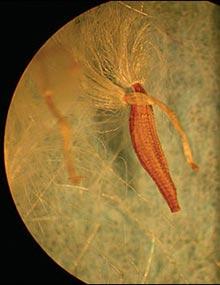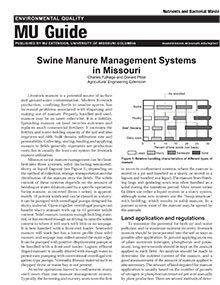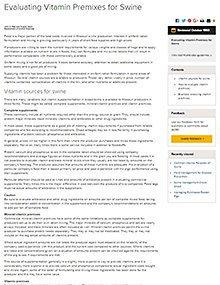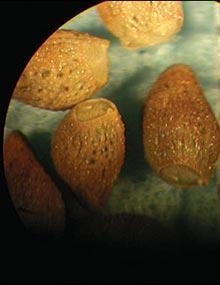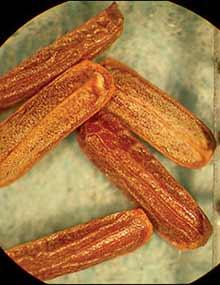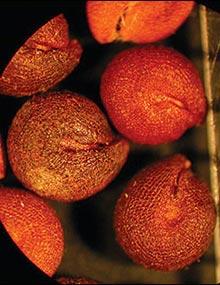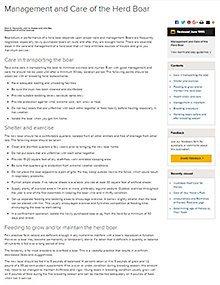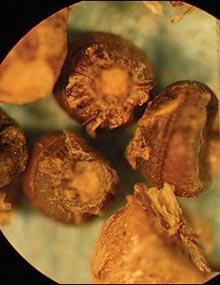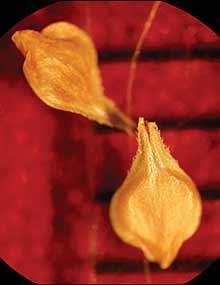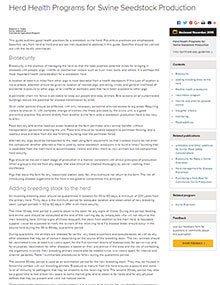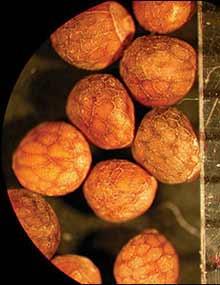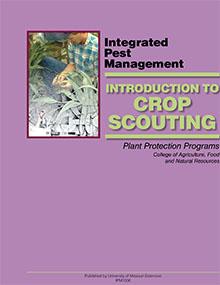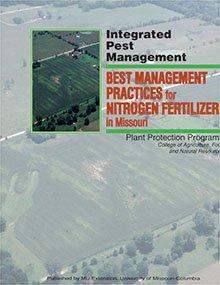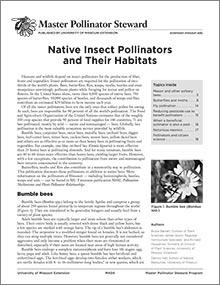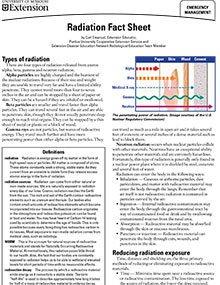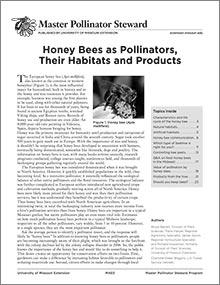Missouri Weed Seeds, Page 09
Reviewed
All members of Asclepiadaceae are known as milkweeds. There are at least 15 species of milkweeds that occur in the state.
Missouri Weed Seeds, Page 44
Reviewed
Of the nearly 280 genera of Scrophulariaceae (Figwort family), at least 25 are known to be in Missouri. The genera that contain mullein and speedwell are among the most common.
Evaluating Vitamin Premixes for Swine
Reviewed
Feed is a major portion of the total costs involved in Missouri swine production. Interest in on-farm ration formulation and mixing is growing, particularly in years of short feed supplies and high prices.
Missouri Weed Seeds, Page 12
Reviewed
Boraginaceae (Borage family) also includes several nuisance plants known as “beggar’s lice” because their fruits readily attach to clothing and other articles.
Missouri Weed Seeds, Page 47
Reviewed
Of about 90 known genera of Verbenaceae (Vervain family), only three occur in the state. Most prevalent are the vervains, with seven species, most commonly encountered throughout Missouri.
Common Internal Parasites of Swine
Reviewed
Parasites can greatly reduce swine performance. Visit our website to learn about the Common Internal Parasites of Swine.
Managing Nitrogen to Protect Water Quality
Reviewed
How is nitrogen lost from the soil?Nitrogen is primarily lost by three pathways:
Missouri Weed Seeds, Page 15
Reviewed
Only a few members of Capparidaceae (Caper family), such as spider flower, occur in Missouri.
Management and Care of the Herd Boar
Reviewed
Missouri Weed Seeds, Page 18
Reviewed
At least 18 different Chenopodium genera members, also known as lambsquarters, are present in Missouri. Kochia is also another important member of Chenopodiaceae (Goosefoot family).
Missouri Weed Seeds, Page 21
Reviewed
Missouri is home to more than 200 species of sedges (Cyperaceae). Agronomically, yellow nutsedge, Cyperus esculentus, is considered to be the most problematic in prevalence of this family of plants.
Herd Health Programs for Swine Seedstock Production
Reviewed
This guide outlines good health practices for a seedstock swine herd. Preventive practices are emphasized. Specifics vary from herd to herd and are too individualized to address in this guide. Specifics should be worked out with the herd's veterinarian.
Missouri Weed Seeds, Page 24
Reviewed
Fabaceae (Pea family), the legume family, is one of the largest groups of broadleaf plants. Common members include clovers and various beans and peas.
Missouri Weed Seeds, Page 27
Reviewed
Common members of Lamiaceae (Mint family) not shown in this guide are henbit and purple deadnettle, which are two of the most prevalent winter annuals in Missouri.
Introduction to Crop Scouting
Reviewed
Editor's note
The following abstract describes a publication that is available only as a downloadable PDF.
Best Management Practices for Nitrogen Fertilizer in Missouri
Reviewed
Successful nitrogen management delivers enough nitrogen to crops to optimize yield and profitability while minimizing losses to water and air. Learn the best management practices from sound economic, production and environmental viewpoints in this guide.
Radiation Fact Sheet
Reviewed
Editor’s note
On 1/22/15, a web address was updated on this page and in the PDF.
Coping With Summer Heat
Reviewed
The heat of a Missouri summer not only can make for high utility bills, but also can be deadly. Here are some tips to help keep you comfortable, healthy and penny-wise.
Honey Bees as Pollinators, Their Habitats and Products
New
Learn about the honey bee, from its life cycle, to its various races, to its pest problems, the benefits it provides, and how we can aid its success in this University of Missouri Extension guide. Become a Master Pollinator Steward!
Squeezed by Rising Food Prices?
Reviewed
Small changes in your shopping habits can mean saving money at the grocery store. Check for tips on this page that can work for you and your family.
